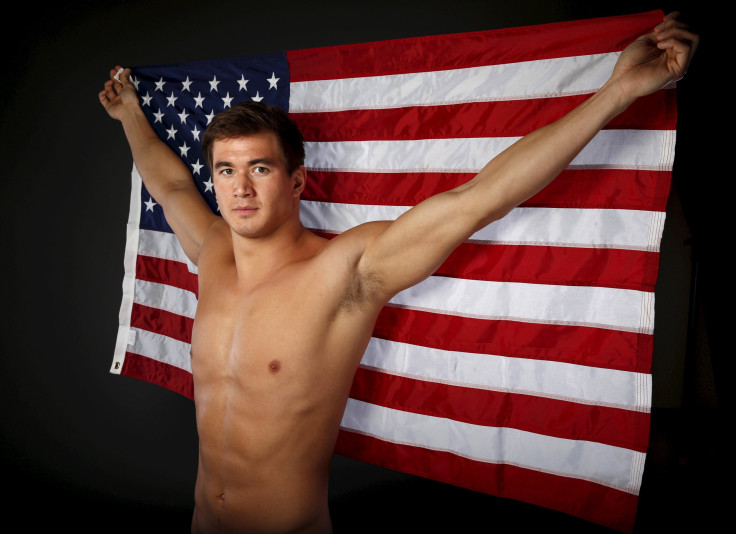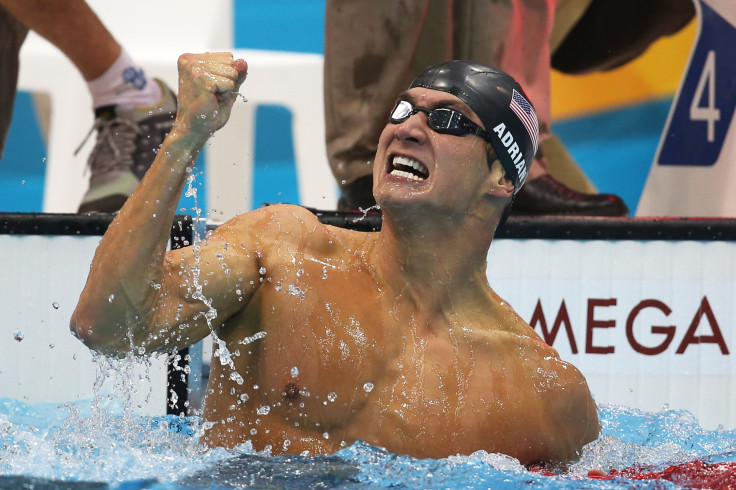USA Olympic Swimmer Nathan Adrian Prepares For Rio 2016 With Precise Diet, Training Regimen

Olympians know that staying in top physical shape means paying attention to the most minute details that an average person might never consider. For athletes like United States Olympic swimmer Nathan Adrian, doing everything possible in order to peak at the exact right moment can be the difference between winning a gold medal and leaving the Summer Games empty-handed.
“Literally everything that we do is pretty calculated,” Adrian told International Business Times. “Like the stairs that I climb a day to how often I use the elevator.”
Adrian is training to be part of Team USA at the 2016 Rio Olympics, where he hopes to compete for the U.S. in a third consecutive Olympics. After he won a gold medal in the men’s 400-meter freestyle relay in Beijing in 2008, Adrian won the gold in the 100-meter freestyle at the 2012 London Olympics. He edged out silver-medal winner James Magnussen of Australia by one-hundredth of a second with a time of 47.52.
With the U.S. Olympic Team Trials set to begin Sunday in Omaha, Nebraska, much of the hard work is done. But during the nine months of intense training and the days leading up to the trials, members of the team closely monitor what they put into their bodies, aiming to build strength and recover from long workouts.

“For me I know that there’s a couple requirements. One of them is getting 225 grams of protein a day, and that comes from just 1 gram per pound of bodyweight,” Adrian said. “And then through really intensive practices I try to have some carbohydrates on hand, just something like a Powerade or something. And then at the end of a glycogen-depleting practice, we try to hit I think it’s 1 gram per kilogram of carbohydrates, so it’s around 100 grams of carbs right after practice.”
The diets of Olympic swimmers have become one of the most popular topics of discussion surrounding the U.S. team in recent years.
During the 2008 Summer Olympics, Michael Phelps’ diet made headlines when it was reported that the most decorated Olympian in history ate 12,000 calories per day. A few years later, 11-time medalist Ryan Lochte posted a photo of his supposed 10,000-calorie daily diet on social media that went viral.
Adrian laughed off the absurdity of such numbers, which were later proved to be untrue. But he maintained that eating a consistent, healthy diet is a crucial part of his overall training regimen.
“I just kind of maintain a healthy balance of proteins, fats and carbs and just make sure as much of what I can eat as possible is raw, plant-based stuff, except obviously some meat for some protein.”
It may be safe to presume Adrian is among Team USA’s fittest athletes. He is one of 19 athletes set to appear in ESPN the Magazine’s annual Body Issue, which features photos of athletes chosen to pose naked for the publication.
As he aims for a gold medal at a third straight Olympics and become the first American since 1928 to place first in the 100-meter freestyle in consecutive games, Adrian is promoting Citi’s “Stand for Progress” program, encouraging Americans to improve in various aspects of their life.
“Part of that is kind of stating a goal. For me, it’s obviously trying to swim as fast as I can and trying to win some gold medals for Team USA. But for anyone at home, it could be saving money for a down payment, eating healthier, doing any number of things that could end up being part of their better life.”
A star swimmer like Adrian might be the ideal spokesman for such a cause. Swimming results are influenced by such varying factors as stroke mechanics and swimwear technology, prompting swimmers to focus on what at first glimpse might seem like trivial intricacies but are in fact quite important. Fourteen world records were broken in men’s swimming at the 2008 Beijing Games, and three more were set at the London Games in 2012, mostly due to minor adjustments.
Earlier this month, Adrian held off some of the world’s best at the Arena Pro Swim Series at Santa Clara, California, setting a meet record of 21.68 seconds in the 50-meter freestyle.
© Copyright IBTimes 2024. All rights reserved.













